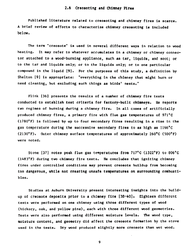I thought I was doing good in my with my wood moisture content until I stumbled upon this article from the US EERE. Most of my wood is between 12% and 18% in moisture content. It is a mix of Ash, Maple and Cherry that has been split stacked and covered for over 18 months. What are your thoughts on this article.
http://apps1.eere.energy.gov/consumer/your_home/space_heating_cooling/index.cfm/mytopic=12570
Wood and Pellet Fuels
Selecting and Storing Wood
Because a lot of energy can be wasted burning wet wood, you should use wood that has been properly seasoned. Properly seasoned wood is harvested in the spring and allowed to dry throughout the summer. Look for wood that is of even color, without any green. It should have a moisture content of just over 20%–25% by weight. Some well-seasoned wood can in fact be too dry for today's airtight modern stoves. If you place wood that is too dry on a bed of coals, it will instantly give up its gases as smoke, wasting unburned smoke and producing creosote buildup.
http://apps1.eere.energy.gov/consumer/your_home/space_heating_cooling/index.cfm/mytopic=12570
Wood and Pellet Fuels
Selecting and Storing Wood
Because a lot of energy can be wasted burning wet wood, you should use wood that has been properly seasoned. Properly seasoned wood is harvested in the spring and allowed to dry throughout the summer. Look for wood that is of even color, without any green. It should have a moisture content of just over 20%–25% by weight. Some well-seasoned wood can in fact be too dry for today's airtight modern stoves. If you place wood that is too dry on a bed of coals, it will instantly give up its gases as smoke, wasting unburned smoke and producing creosote buildup.



 !
!